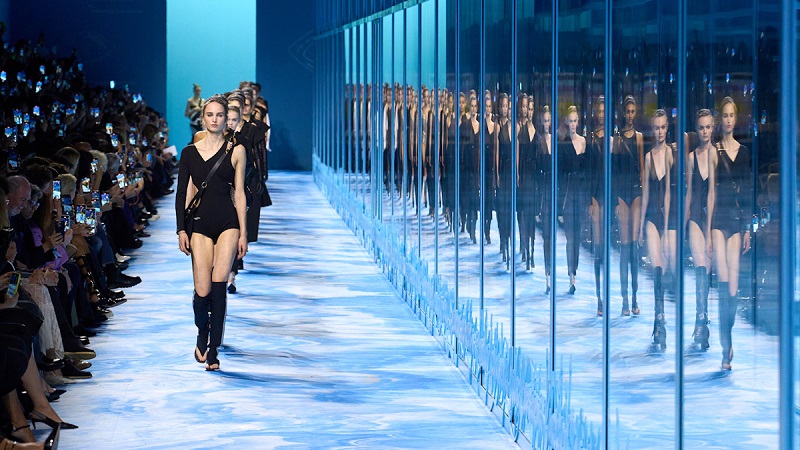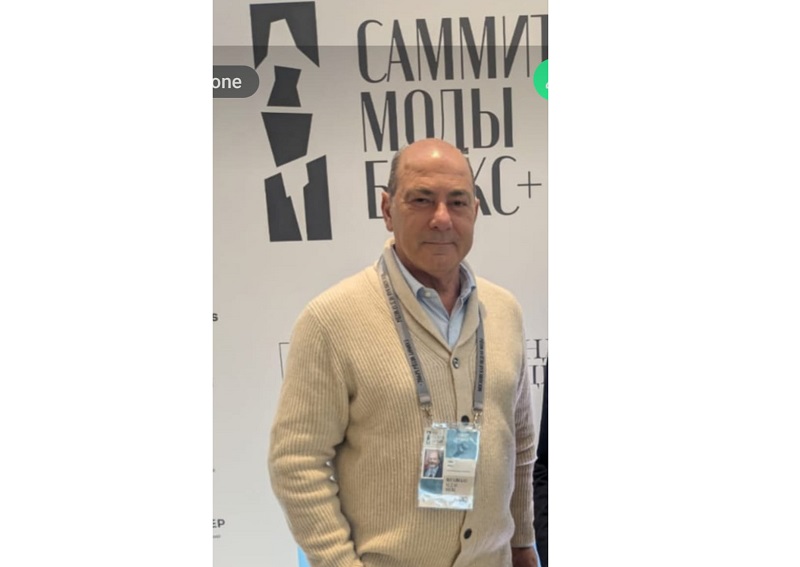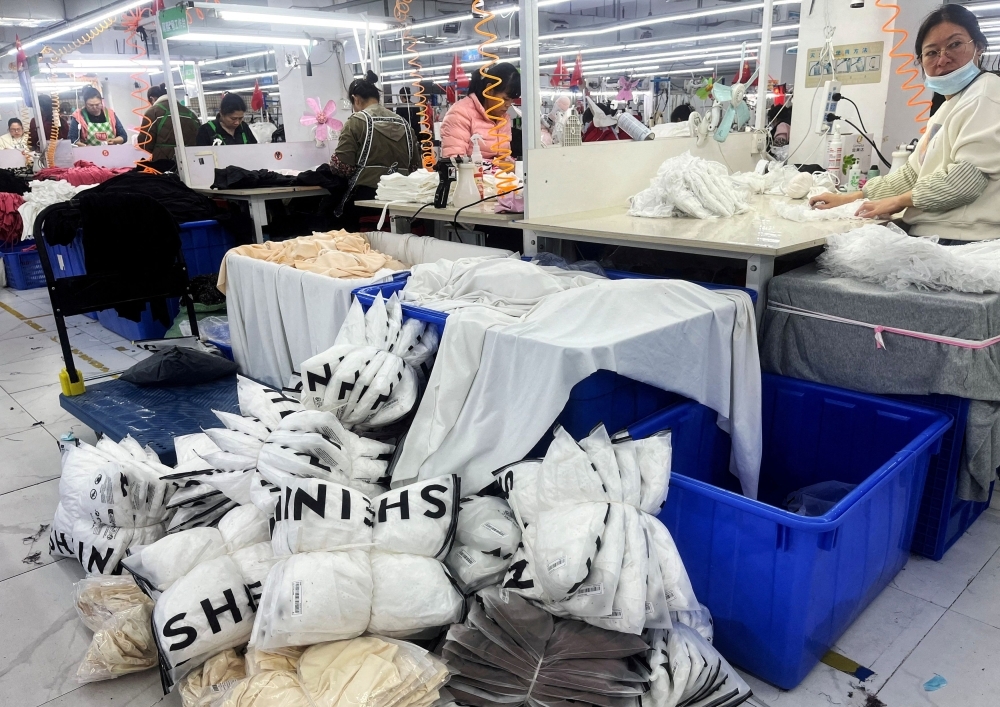FW
Some 40 Bangladeshi garment factories will take part in Premiere Vision Paris, September 19 to 21, 2017. Bangladesh wants to show what it can manufacture. Usually, Bangladeshi apparel makers do not get such a big platform to network with buyers and brands. Bangladeshi companies have passed the selection criteria set by Premiere Vision Paris with over 85 per cent compliance levels whereas Chinese factories have been rejected for compliance levels of less than 35 per cent.
Bangladeshi companies have an efficiency rate of 62 per cent to 75 per cent compared with less than 18 per cent and 35 per cent of their counterparts in Ethiopia and Myanmar.
Premiere Vision Paris is the definitive platform for the last 35 years for professionals involved in the apparel business. The show highlights the best in fabric and garment manufacturing and production destinations. It is a must-see for all stakeholders in the industry. This is a premium trade show geared at the high fashion market segment.
With 60,000 visitors from 124 countries in each edition, it is a place where manufacturers can engage with new buyers from high-end segments and establish business contacts. Over 5,000 global brands will join the three-day show. This is the biggest sourcing connection fair.
Adnan Ahmad has taken over as the president of Clariant in India. Ahmad succeeds Deepak Parikh, who was instrumental in implementing and leading Clariant’s growth strategy in India for the last four years. Parikh will now serve as the region president for Clariant in North America as well as chief executive officer of both Clariant Corporation and Clariant Canada.
Ahmad, a chemical engineer, has over 32 years of industry experience across sectors and continents. He began his career with ICI where he worked in a variety of manufacturing, supply chain and business roles across India. At BP he held various global and leadership roles with demonstrated success in transformational leadership and regional supply chain management. He was also with Castrol.
Switzerland-based Clariant, is a world leader in specialty chemicals. It is a leading manufacturer and merchant exporter of pigments, fine chemicals and leather chemicals. The business structure of the company comprises the following divisions: life science and electronic chemicals, pigments and additives, textile, leather and paper chemicals, cellulose ethers and polymerisates, functional chemicals.
Clariant has introduced several new products both in leather chemicals and textile chemicals. The personal care business develops and produces specialty ingredients and co-surfactants for skin and hair care, wet wipes and pharmaceutical applications.
"RFID tagging is a fast-growing trend among garment retailers as the cost of tags comes down and technology improves. Factor that’s driving growth is huge growth in shopping via mobiles, tablets, desktops, and messaging services and social media, leading to the growth of omni channel retailing, having a single view of products and customers across all shopping channels and warehouses. That forces retailers to have clear knowledge about where every individual piece of stock is situated in the supply chain."

RFID tagging is a fast-growing trend among garment retailers as the cost of tags comes down and technology improves. Factor that’s driving growth is huge growth in shopping via mobiles, tablets, desktops, and messaging services and social media, leading to the growth of omni channel retailing, having a single view of products and customers across all shopping channels and warehouses. That forces retailers to have clear knowledge about where every individual piece of stock is situated in the supply chain. When a shopper orders an item, the chain can locate it and get it to a nearby store for them to pick up.
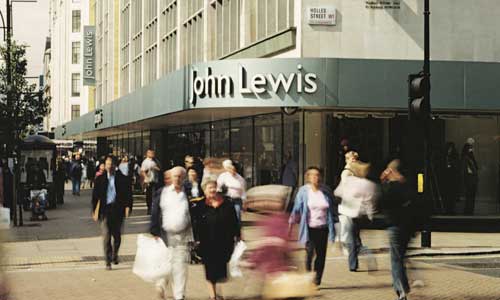
The latest in line is River Island who is attaching radio-frequency identification (RFID) tags to every item of clothing it stocks. The tags enable a store’s staff to identify all items of clothing on the shop’s shelves and racks, and in stockrooms and fitting rooms, using a remote RFID reader. Just switch on the reader and it sends out radio waves which identify a unique code embedded in every tag. In just a few minutes, store managers can conduct a stock check and identify every item of stock in-store, a process that done manually takes many hours. The stores used to carry out a stock take just once or twice a year. Now they do it every week.
Other companies following
Fashion giants such as Marks & Spencer and John Lewis have tested the tags and are introducing them across their stores. US department giant Macy’s is launching the technology across its business. Tesco, Asda and many others are also trying their hands at it. Department store chain John Lewis has been experimenting with RFID for about ten years, and is now trialling the technology and introducing it to some 30 of its stores. Most of its fashion range will be RFID-enabled by the end of this year.
Room for growth
More than 100 billion items of apparel are sold a year globally, while RFID tagging is in single percentage figures, there room for expansion. The key move which unleashed RFID was the creation of a single global standard, says Jacky Broomhead, UK market development manager for apparel at GS1, which creates supply chain standards for retailers. Before 2005, there was no single standard and retailers used a variety of tags. But the Electronic Product Code (EPC) was launched in 2005 and refined in 2008 as EPC Generation 2. We got the industry to unite globally under a radio frequency for the tags to operate. The benefit is the tags will work anywhere in the world, said Jacky.
Having one standard reduces price of tags, which has come down 75 per cent in the past five years. The cost varies by volume but it was on average about 12p a tag and now retailers are getting them for 5p or 6p, highlighted Jacky. The cost of implementing the hardware – buying the readers – is also relatively low. RFID tags could have wide uses in the future, beyond just checking stock. They could replace bar codes for payment and act as security tags.
Expert say the use of tags will spread beyond fashion into other areas of retail. RFID is one piece in the broader adoption of internet, including sensors, beacons, cameras and smart shelves. The combination of these technologies will drive adoption into more stock keeping unit-intensive retail sectors like grocery.
"India’s textile sector has the second-largest employment after agriculture, employing 32 million workers. It has the potential to double employment in the next seven years as per the vision document (for 2024-25). India has a rich mix of synthetic and natural fibres and yarns but still remains a cotton-focused. India was finding it profitable to export raw cotton to China because of Chinese government’s support for stockpiling cotton yarn. Also, the presence of cotton in yarn, fibre, fabric and garments is close to 70 per cent of usage within India, which is also reflected in exports."
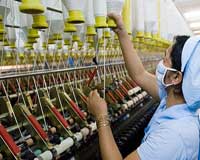
India’s textile sector has the second-largest employment after agriculture, employing 32 million workers. It has the potential to double employment in the next seven years as per the vision document (for 2024-25). India has a rich mix of synthetic and natural fibres and yarns but still remains a cotton-focused. India was finding it profitable to export raw cotton to China because of Chinese government’s support for stockpiling cotton yarn. Also, the presence of cotton in yarn, fibre, fabric and garments is close to 70 per cent of usage within India, which is also reflected in exports. But, global trends are exactly the opposite, i.e., it has 70 per cent of synthetics and man-made fibres. So, India’s domestic and export mix is the opposite of global fashion and demand trends.
The inverse skew
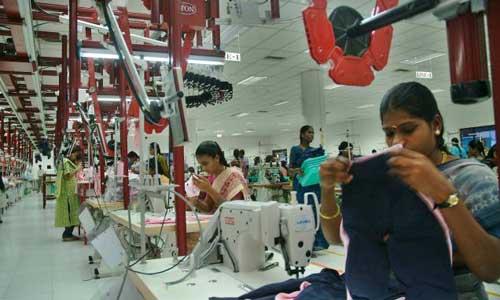
The inverse skew of fibre usage in India is due to the skewed tax treatment. Until GST, the cotton value chain wascompletely free of indirect taxation whereas man- made fibre suffered a dead-weight tax of 12 per cent excise. That anomaly was supposed to be removed by uniform GST. Instead of a fibre-neutral policy, we have a dual GST structure, with 18 per cent GST on upstream, and 5 per cent on all downstream, leaving an inverted duty structure. This has already led to much disruption, as can be seen in shutdowns or strikes in powerloom clusters in Bhiwandi or Coimbatore.
Urgent need for a new policy
Textiles, along with agriculture, construction and tourism, have large-scale job creation potential. It is a sector dotted with small and medium enterprises, which make up 80 per cent of the units. Thus, it is ideally positioned to be a poster boy for ‘Make in India’. This is also a sector which is undergoing a huge change due to automation, digital printing and the relentless rise of e-commerce. These developments threaten to completely change the face of this industry. India’s share of textile exports in total exports (at 12 per cent), is half of what it was in 1996. Bangladesh’s garment exports exceeded India’s in absolute terms back in 2003 and today, it exports twice that of India. Even late starter Vietnam overtook India in 2011. So, to address challenges like changing consumer and fashion trends, modernisation of machinery, skill upgradation, a fibre-neutral tax policy and meeting the needs of the e-commerce phenomenon, we need a national policy and implementation plan. A coherent and holistic national textile policy on the lines of national telecom policy can give a much fillip to Telecom Sector and avoid the risk of losing to countries like Vietnam and Bangladesh.
PowerTex India scheme
Recently the government launched PowerTex India, a comprehensive scheme for powerloom sector development, simultaneously at over 45 locations in the country. Launching the scheme in Bhiwandi, Thane district, Maharashtra, the Union textiles minister, Smriti Zubin Irani had said Bhiwandi will be known for resurgence in powerloom sector. The powerloom sector alone employs over 44 lakh people, and the scheme is expected to benefit small powerloom weavers.
With an outlay of Rs 487 crore for three years from 2017-18, it has nine major components, including two new ones. The two new schemes are Pradhan Mantri Credit Scheme for powerloom weavers and solar energy scheme for powerlooms. Existing powerloom units, new ones, and group enterprises in weaving will now get 20 per cent project cost with a ceiling of 1 lakh as margin money subsidy and 6 per cent interest subvention, both for working capital and term loan up to 10 lakh for a maximum period of five years.
Ecommerce marketplace ShopClues os pushing its IPO forward and has now hired Deepak Sharma as its chief financial officer to lead the IPO and take it forward. Sharma was formerly working with offline retailer V Mart and led the IPO for the retailer in 2013. He has been brought on board with the mandate of helping ShopClues hit the capital markets.
ShopClues founder and CEO Sanjay Sethi says they may be ready for quarterly reviews by the end of next quarter and will address all regulatory issues by then. The company is looking to go public next fiscal and are meticulously tracking market sentiments. Revenues have doubled since November last year along with them becoming unit economics positive. Focusing on fashion and lifestyle has yielded good results for the company.
Over the last one year, the company has been moving away from segments like high priced smartphones, electronics and focusing on fashion and lifestyle. Fashion and lifestyle contributes about 40 per cent of overall sales. Unlike Flipkart and Amazon, ShopClues is known for its low value merchandise catering largely to the Tier II consumers.
ShopClues currently clocks about 2.5 million shipments per month. Radhika Aggarwal, Co-Founder, they had decided to move away from sectors where heavy discounting is widely prevalent.
Nearly 2,000 working units of the knitwear/readymade garment cluster in Tirupur, employing more than a lakh people, called for a day’s strike on July 21 to protest against the decision to place them under the 18 per cent GST slab.
Among various jobs at Tirupur, knitting, dyeing and compacting attract only five per cent of GST, while other works such as printing, embroidery, button fixing, checking, ironing and packing are attracting 18 per cent.
Manufacturers say even finished garments attract only five per cent GST and there is no logic in bringing small and tiny job working units under 18 per cent. They say that since the cluster functions under a 90 day credit format (in the value chain), such a high GST will put the sector under financial stress, which will render people jobless.
Levying 18 per cent tax is seen as disturbing the seamless credit flow and defeating the very objective behind GST. The problem is said to arise from the fact that due to the global economic situation, many foreign buyers have started operating on a credit basis where payments for exported goods are realised from 90 to 150 days from the date of shipment. This credit period is generally passed to every segment of the value chain whereby job workers are paid with credit terms of around 90 days.
In this scenario, the situation where small and tiny job workers have to pay 18 per cent immediately at the end of the month, despite their payments being realised much later, is expected to create a huge working capital blockade causing financial stress to micro and small industries.
Stoll has launched an innovative networking concept for the textile production of tomorrow. Knitelligence combines all its software solutions and covers the entire value creation chain of flat-knitting production. From design idea to development and manufacture, knitelligence offers tailored solutions for every component. Customers will benefit from more consistent workflows, shorter, transparent production cycles, and an increase in quality, productivity, and, therefore, overall plant efficiency.
Customers can not only design their processes to be considerably more efficient, but can also react far more flexibly to the requirements of the market. Stoll, based in Germany, is one of the world’s leading manufacturers of flat knitting machines. The portfolio includes flat knitting machines and pattern software that are used to produce fashion and technical textiles. The company exports its products to more than 70 countries worldwide. With innovative developments and state‐of‐the‐art production, Stoll makes a whole host of knitting trends possible.
The company has represented intelligent progress and pioneering quality for over 144 years and continues to set standards in the age of digitization. With knitelligence Stoll is creating substantial added value for its customers, highly efficient flat-knitting production through the optimization and networking of individual production steps.
"Sourcing is key in every industry vertical. More so, it holds utmost importance especially in apparels sector, where fashion cycle changes fast. Right sourcing decision helps gain greater efficiencies by bringing flexibility in entire supply chain. Countries such as China, Vietnam, and Bangladesh have been pioneering sourcing and India has a lot learn despite having gained support from the government. As Yamini Jain, Senior Consultant, Threadsol points out for a brand, sourcing is the right manufacturer who can deliver quality garments at the right price, time and quality who can deliver quality garments at the right price, time and quality."

Sourcing is key in every industry vertical. More so, it holds utmost importance especially in apparels sector, where fashion cycle changes fast. Right sourcing decision helps gain greater efficiencies by bringing flexibility in entire supply chain. Countries such as China, Vietnam, and Bangladesh have been pioneering sourcing and India has a lot learn despite having gained support from the government. As Yamini Jain, Senior Consultant, Threadsol points out for a brand, sourcing is the right manufacturer who can deliver quality garments at the right price, time and quality who can deliver quality garments at the right price, time and quality. And for manufacture, it is the vendor from whom the raw material or job is being procured.

Discussing the challenges, Jain says both brands and manufactures are facing serious challenges while sourcing due to the versatile and dynamic nature of the industry. Cost and speed are particularly important and at the same time quality, compliance and capacity cannot be compromised while sourcing. The biggest challenge lies in balancing all these factors.
Sustainability – the biggest concern
Growing awareness about sustainability has been posing a greater threat to the industry. As Louis Amelie Leuchenberger, Marketing Head, FourSource says to hit lower lead times and still remain price competitive is a tough call. It is difficult for manufactures to remain sustainable and having long lasting relationship. The need of the hour is further innovation from brands. Ashok Chhajer, Director, Krishna Lamicoat argues balancing the lead time, the right quality, right deliveries is challenging for any brand. Earlier, people used to work with few suppliers and those suppliers were paid well and they were happy to work with them. With stiff competition, newer challenges have been springing up every day. Hence, brands have to be actively involved in innovation, that is the only key right now. Chhajer feels it should be a two-way street and efforts should be made from the retailers’ end as well. Manufactures have to be more lean and competitive.
Getting its act stronger
While China and Vietnam have clearly taken the lead, India hasn’t been able to register growth. While countries are looking for other sourcing avenues, India should quickly present its act strongly. Chhajer says textile policies in India are not supportive. There is no dearth of qualified people to make garments at low cost, we have not been able to develop textile in our country. Even small countries like Sri Lanka they contribute lot of good garments.
Today China has become expensive, hence, buyers are looking for newer markets. Though fewer sourcing executives plan to decrease their China sourcing share, most are still working on shifting away from China. Hence, there is an opportunity for India to cash in on. The current government has taken a lot of initiatives to employ people. Moreover, many states such as Odisha and Jharkhand have come up with apparel parks and local government is taking a lot of efforts in promoting the garment industry. It’s time for the entire industry to get together and become the sourcing hub of the world.
Indonesia’s textile and garment exports increased 0.62 per cent in the first half of 2017. A 20.4 per cent rise in knitwear garment exports contributed significantly. However, the country noted a decline in exports to major markets such as the US, the EU and Japan by 3.6 per cent, four per cent and five per cent respectively.
The boost in exports is also said to be a result of the introduction of automated processes in textile and garment manufacturing. Automation has made the exporters even more competitive in terms of pricing and delivery, thereby boosting the country’s exports.
The country is aiming to attract foreign importers with improved economic and political stability. This could, in turn, be a deciding factor in reinforce Indonesia’s position in the textile and garment industry. The target is to increase textile exports by 1.7 per cent in 2017. Indonesia’s textile and textile product exports grew three per cent from January to February this year.
The country’s clothing and textiles go mainly to the United States, Japan, Turkey, China, and Germany. There is a high demand for Indonesian batik cloth and other traditional or cultural Indonesian fabrics. Indonesia is one of the largest textile and apparel producers in the Asean region. The industry in Indonesia employs approximately 17 per cent of the country’s workforce and contributes significantly to the country’s economy.
India's cotton production may rise by 10 to 12 per cent this year despite the erratic weather. The area sown as on July 14 was 90.88 lakh hectares, up by 17 per cent from 73.93 lakh hectares sown on the corresponding date of the previous year. Farmers are not interested in sowing pulses or soyabean. Price of pulses and soyabean are ruling below the minimum support price while cotton is one of the few crops that gives good returns to farmers.
Cotton seed companies too have confirmed a healthy growth in sales. It is estimated that cotton seed sales will be higher by at least ten per cent this year over the previous year.
Though re-sowing of the fiber crop has taken place in some areas, the seed industry does not see any major adverse impact on cotton production due to the dry spell in the first half of July. Major cotton growing areas in India are Maharashtra, Gujarat, Telangana and Karnataka.
India is the largest producer of cotton in the world, accounting for about 26 per cent of world cotton production. It has the largest area under cotton cultivation in the world and constitutes about 40 per cent of the world area under cotton cultivation.







